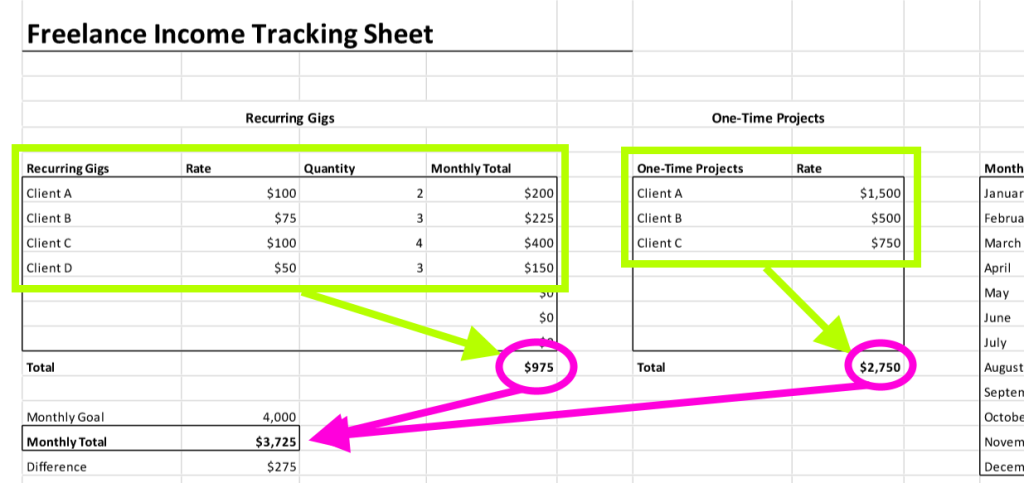Why Planning Your Income Is the Best Way to Earn It
Save article ToRead Archive Delete · Log in Log out
4 min read · View original · sitepoint.com
I’m a slow, procrastinating writer with kindergarten-level focus. And I earned $4,000 last week purely from writing articles.
More from this author
I didn’t do anything fancy, but I did do something very, very important.
I planned out my income.
- I decided I wanted to earn $4,000 that week.
- I mapped out every gig I would need in order to earn that amount.
- I grabbed the gigs and completed the work.
And whether you are a freelancer or running an ecommerce store, you are probably just a plan away from earning your desired income. Just follow this process:
Step 1: How Much Do You Want to Earn?
I’m not going to waste your time telling you how important planning is. You already know it’s important. You already know that a good business plan is a crucial step to achieving business success.
Despite this, most service providers run their business like this:
- Yay, I have work. Now I’m completing the work.
- Aaaaand, the work is done. Time to search for more work.
No planning. No perpetual lead acquisition strategies in place. It’s feast and famine.
But we’re killing that model today, and it starts with a question.
How much money do you want to earn in the next 30 days?
Don’t gloss over this. Write it down now. Seriously. Open up Notepad or Evernote and write a number.
Now let’s be a bit more specific. Write down 3 numbers.
- How much you earn per month right now
- How much you’d like to earn to feel “satisfied” and pleased with your income
- How much you’d like to earn to be able to do everything you want to do
Now that we have those numbers, select the “satisfied” number from #2. We are going to base our income plan off of this number, because we have to start somewhere.
Step 2: Create a List of Gigs That Would Bring in That Income
Now that you have a target number, the next step is to plan out the exact slate of gigs that will net your desired income.
You probably work with a variety of gig types, projects, packages, prices, etc. so you will want to list out every type of project you might work on as well as its estimated income. Now, simply select quantities of each project that will result in you reaching your desired income.

For example, let’s say I’m making around $3,000 per month and I’ve set $4,000 as my target monthly amount.
To start with, I list my current recurring clients in the chart above. I list my rate per unit and the number of units they order each month. This could easily be applied to businesses selling products rather than services.
Next I list any one-time projects I might have scheduled for that month. The spreadsheet should be designed to automatically add the totals and show you how much you are currently on track to make (I’ve created a basic spreadsheet like the one above you can download here).
Now it’s just a matter of adding additional theoretical projects until you’ve reached your desired total. There’s obviously nothing magic going on here, and yet this process can revolutionize the way you run your business and the amount of income you bring in.
The key is that you are actually visualizing the exact project breakdown you would need to earn your income. This means that the only thing left is to go out and actually acquire those gigs.
Pitches x Conversion Rate = Paid Projects
If you convert 1 out of every 10 pitches into a paid project, and you need 5 paid projects, then you know exactly what you need to do in order to make your desired income. You need to send out 50 pitches.
Step 3: Hustle, Hustle, Hustle
Sales is a numbers game. Pitching your service is a numbers game.
Now that you know how many pitches you need to send, hustle and send them. When was the last time you sent 50 pitches in one week? That might literally be the only thing standing between you and your target income.
And what happens if you send out 50 pitches and only land 1 new gig?
No problem!
You just need to get better at pitching. Easy peasy. Here are three resources to help you do just that:
- 20 Hot Tips On How To Write The Perfect Pitch
- How To Get Your Head In The Game & Just Pitch
- Here’s What Real Blog Editors Look For In Your Pitches
There is nothing better in the world than knowing exactly what is holding you back from a win. If you know what it is, you can solve it. That’s freelancing. That’s business. That’s life.
Break down the goal. Map out the pieces. And execute.
Conclusion
Earning money is pretty straightforward. Just follow the steps we discussed today:
- Decide what you want to earn.
- Map out every gig or sale you need to get there.
- Acquire and complete the necessary work.
If you want to grab that spreadsheet to play around with, click here. If you’re a writer like me, I’ve put together a blueprint to help you build your freelance writing career.